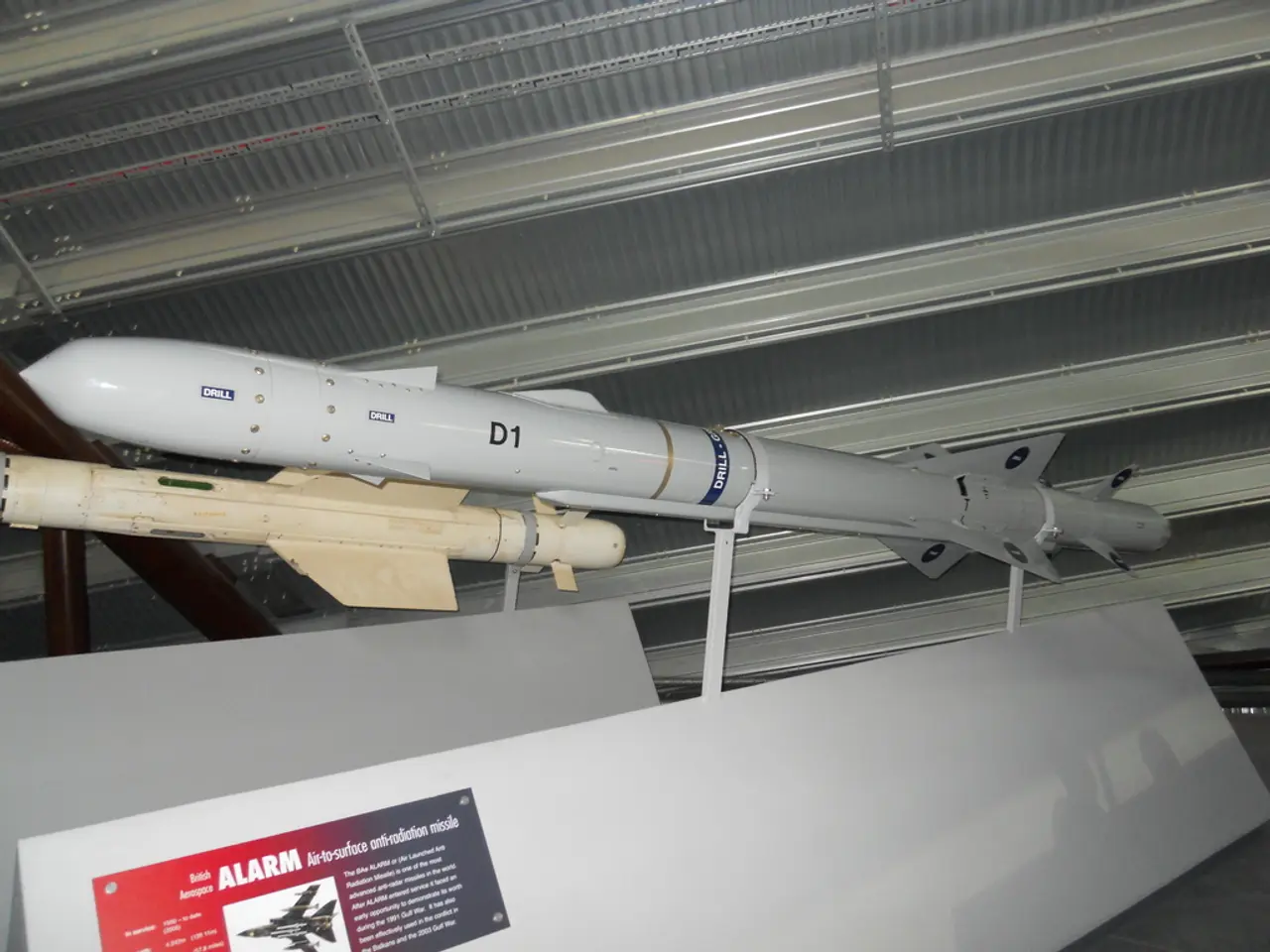France Develops Deadly Hypersonic Nuclear Weapon, Enhancing its Military Might and Making it Harder to Attack
The ASN4G, a cutting-edge hypersonic missile being developed by MBDA France, is set to revolutionise France's strategic defense capabilities. This advanced weapon system, designed as a pre-strategic deterrent, boasts several impressive features that make it a formidable addition to France's arsenal.
## Key Features and Capabilities
The ASN4G's speed is one of its most striking attributes, with estimates suggesting it will achieve speeds between Mach 5 and Mach 7. This remarkable velocity translates to over 5,280 mph (8,500 km/h), making it two to four times faster than its predecessor.
Maneuverability is another key aspect of the ASN4G's design. While specific details are not provided, the use of a scramjet engine suggests it can maintain high speeds and possibly perform complex trajectories due to the nature of scramjet technology, which can support supersonic combustion ramjets for sustained high-speed flight.
Stealth technology is also expected to play a role in the ASN4G's design, although the specifics are not yet disclosed. Modern hypersonic missiles often incorporate stealth or low-observable features to evade detection.
The ASN4G is designed for adaptability, with plans to launch it from both land-based platforms like the Rafale jet and naval carriers. However, the compatibility with land and naval platforms is yet to be detailed.
The ASN4G's range is estimated to exceed 1,000 km, more than double that of its predecessor, and it will be equipped with a new nuclear warhead.
## Role and Deployment
The ASN4G is intended to function as a warning shot before the full deployment of France's submarine-launched ballistic missiles. It is planned for integration with the Rafale F5 fighter jet by 2035.
The increased range of the ASN4G offers strategic advantages over potential adversaries, enabling long-distance strikes. Its compactness and adaptability make it a game-changer in the landscape of international defense, as it can be launched from various platforms and environments without compromising performance.
The development of the ASN4G highlights France's commitment to maintaining a robust defensive posture amid escalating global threats. This hypersonic missile, as part of France's strategic defense capabilities, could render France almost invulnerable. However, it's crucial to note that the ASN4G's innovations are promising, but their ultimate value lies in their ability to remain unused—deterring rather than engaging in warfare.
The French military's recent advancements in nuclear technology signal a significant shift in strategic defense capabilities, with the ASN4G missile being a testament to this evolution. As the development of the ASN4G continues, it will undoubtedly reshape the geopolitical landscape and serve as a powerful deterrent against potential aggressors.
The ASN4G's integration with advanced technologies such as stealth and scramjet propulsion is planned to enhance its capabilities, contributing to a more environmentally-conscious strategic defense approach that minimizes detection. As a result, the innovation behind the ASN4G's design aligns with the broader push for technology in defense systems that doesn't compromise with environmental concerns.
Expanding on the ASN4G's technological prowess, its deployment in various environments, whether land-based or naval, underscores the potential for this innovation to revolutionize defense strategies, not only in France but also globally, due to its adaptability to diverse technology ecosystems.




